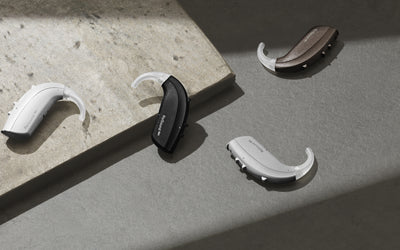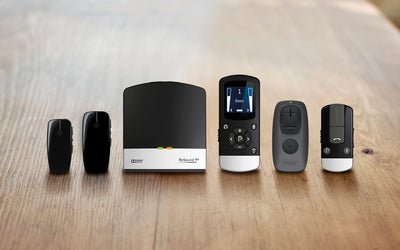By
Niamh Harnett
Ear wax plays a hugely important role in maintaining the health and cleanliness of your ears, however, too much can have a negative impact.
Ear wax protects our ears from dust, dirt, and pesky unwanted debris however when we have a buildup, it can actually prevent sound from getting into your ear. Ear wax build-up in our ears or hearing aids can cause sound to be muffled or distorted and lead to an uncomfortable experience.
Thankfully with proper hearing aid care such as regular maintenance and using wax guards you can prevent wax build-up and keep your hearing in tip-top shape.

What is a wax guard?
A wax guard is a small plastic screen that you attach to your hearing aid, its job is to keep ear wax from building up on or in your hearing aids. By using a wax guard you are helping to keep wax, dust and moisture from entering and subsequently clogging vital components of your devices such as the microphone and the receiver. Should a wax or debris build-up occur you may need professional assistance to clean and repair the device, doing so yourself could cause further damage.
Wax guards play a dual role by keeping your hearing aids in good shape as well as extending their lifetime, ensuring your hearing remains supported and saving you money in the long run.
Ideally, you should change your wax guard every month to keep your hearing aid in good working order. However, this can vary depending on how much or little ear wax you produce, hearing aids can increase the amount of earwax buildup and you may find you need to change your wax guards once every two weeks. It’s important to note that even with wax guards in place you should clean your hearing aids on a daily basis, while doing so give your wax guards a quick check for buildup. It is recommended that a hearing care specialist professional clean your device every 3 to 6 months to ensure its longevity.
How to replace your wax guard
The process of changing your wax guard will vary depending on whether you have In-the-ear (ITE), Receiver-in-canal (RIC) or Behind-the-ear (BTE) hearing aids.
In your wax guard packaging, you will find a small tool similar to a stick and a set of filters. Insert the empty end of the stick into your old wax guard and pull it toward you to remove it. You shouldn’t have to twist the tool for mini Receiver wax guards, but you will need to for HF4 filters, never use excessive force for removal.
Then, insert the other end of the stick into the same spot to replace the new wax guard. As you gently pull the stick towards you the new wax guard should stay in place.
If you’re struggling with your wax guards please contact Wholesale Hearing for support.
Are all wax guards the same?
Not all hearing aid wax guards are the same. Depending on the type of hearing device you have the size of wax guards may vary. We would not recommend using wax guards from a manufacturer different to your hearing aids as you could damage your device.
Cerustop/Nanocare wax guards are compatible with some Phonak, Unitron, ReSound and Widex hearing aids.
If you are unsure which wax guards your hearing aids require, please don’t hesitate to ask an audiologist

Shop All Hearing Aids
Shop now
Shop Accessories
Shop now
Speak To Our Audiologists
Contact Us
